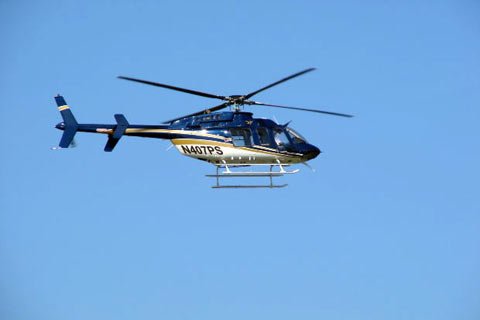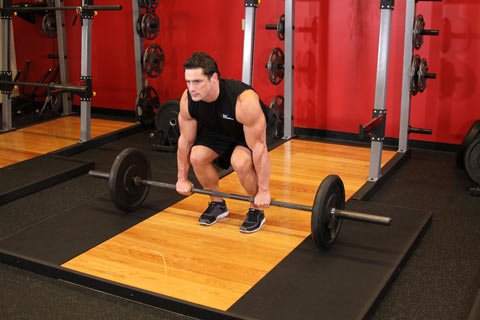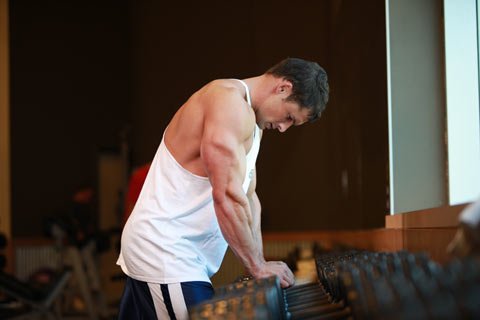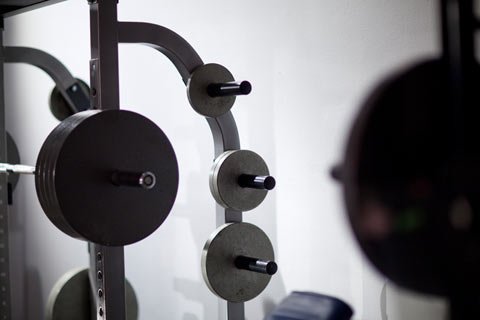Nothing quite screams "I'm a bodybuilder" than a wide and impressively designed back. To me that is the epitomy of our sport. It shows that you have learned the hardest of the hard in creating a mind/muscle link to the back. Just like you can tell someone is a rower by the size of their guns, a sprinter by the size of their quads or a power-lifter by their incredible shoulder development, you can tell someone is a bodybuilder if he has nice lats.
I don't care if you are just starting out at 140 lbs or have been lifting for years and weigh in at 230 lbs. As long as your lats aren't in proportion to the rest of your muscles, to me you'll never be a bodybuilder. Nothing is more ridiculous than semi-big guys doing incorrect benches to show off and then walk out with their arms half a mile from their body like they have lats, but when you look there is nothing there. It's called ILS (Imaginary Lat Syndrome) and is a mental disease that makes you think you actually have lats.
There is such a thing as actual lat syndrome, and that's why you're reading this. Because you want to have lats that disallow you to keep your arms next to your body. I've had this syndrome since I weighed 180 and at that weight people laugh at you for it too, but their smiles turn into grimaces when your weight increases and your back dwarfs them in sheer width. So pay attention and get yourself a back so big, if you painted an "H" on it, helicopters would land on it.

 Click To Enlarge.
Click To Enlarge. So Pay Attention And Get Yourself A Back So
Big That Helicopters Try To Land On It.
The Mind To Muscle Connection
No muscle-group is as hard to train as the back, whether you are genetically gifted in the area or have no talent in that point at all, the only universal given walking through the gym is that most of the guys don't have an inch on their lats. Why? Well, the back is a complex group of many muscles, requires heavy weight and is a total bitch to train. Well, making excuses is easy. The truth is that because you can't see the back you don't know what you are doing, you can't see the results and you aren't exactly anxious to get it pumped. That is where the real problem is.
The best way to solve it is to have a look at your back and see how under-developed it is. Since most gyms don't have double mirrors that could be hard. So let's have a look at some other solutions. For one, try closing your eyes when you are working back, and focusing only on the contraction, hold it, feel it. Imagine the back of a Ronnie Coleman, Dorian Yates or Franco Columbu as it lifts the weights and show all those nicely defined creases and crevices. Imagine that back on you. Feel it growing. See it with your mind's eye. If you can see, or at least imagine your back, you'll have more of a connection and a better feel in it.
Another way is to use your lats more consciously. Every day, spend a few minutes posing in the mirror and do only lat poses, tense them, get that feel, learn to love it. Try to make it a badge of honor to get lats so wide that it looks like you have wings under your arms. That's the part of your back that you can see, so it adds to your visual imagery. Use that to your advantage. Whatever your way is, the trick is to be aware of what you are doing to your back. This is so for every muscle, but since you can't see the back, people often forget this.
Troubleshooting
Since you are reading this, you obviously realized you are doing something wrong in your back training. Sure mind to muscle connections play an important role, but if that were the only problem it still doesn't explain why there are so few good backs around the globe. So instead of acting like some magazine know-it-all and prescribe you my cure-all program for back training, I'm going to point out what you are doing wrong.
Your Workload Is Too Big
First of all, undo yourself of the myth that you have to move inhuman weight to get a decent back. If you are not getting the right feel, if you are not getting the all-important pump in your lats and rhomboids, you are obviously not working them to the right point. Try lowering the weight, add a few reps to it, but try to focus on really getting that burn in your back. If you can feel it that will increase the chance of creating that mental connection as well.
Emphasize Contraction
This one is closely related to the previous point. Often times it is a result of that. If you remember, this is one of the keys to success I pointed out in the article by the same name. Because of the illusion that you need overly heavy weights people are mostly just heaving the weights, moving everything and nothing, but not even tickling their lats. If you'll just move the weight up to the strongest point of contraction and hold it there for a second you will be halfway to improving your back. This is a good estimate of how much weight you should use. If you can't get eight reps in this way, odds are you need to reduce the weight you are using.
Your Workload Is Too Small
You may not need to move every plate on the weight rack to do back work correctly, but some effort is required. People often tell me things like I do two exercises, four sets each and I feel nothing. Well, If most people do 12 or more sets for their chest, a weak muscle with a lot of fast fiber, what on earth makes you think that the largest and strongest muscle in your body needs less work?
Come on, this is used on a constant basis to support the weight of your body, in every movement you make and contains heaps of slow and fast oxidative fiber. This is one muscle group that can handle excessive training. I have good recuperative abilities and work my muscles to the max, I do 22 or 24 sets for back on occasion and sometimes I walk out thinking I haven't done enough.
So where are you with your eight sets? There are at least 4 muscles that need to be worked in the back, 4 very strong muscles. And it doesn't hurt to get some of the lower traps too since they comprise half of the visible area of the back. I suggest you look at your chest training and take 1.5 times the sets you use for that, perhaps more. Have a look at some of the HITers. Even they don't shy away from doing 10-15 sets for back, even though other muscle are limited to 4 or 5 sets. Attempt to make a bit of an effort.
Give Back Its Own Day
Doing another muscle on the same day has a negative impact. While noone is stupid enough to train back after another muscle, even doing it first and then training another muscle could be detrimental to full development. If you are conserving energy for say biceps, a muscle you put a lot of visual effort into, you will not give your fullest in back training, so give back its own training day.
Don't Arch The Back
Apart from the fact that bending your back when lifting heavy weights is one of the prime cause of injury this is just a plain bad practice. The back muscles contract at a point where the elbows are at least to some extent behind the back. If your back is arched, your point of contraction doesn't even bring the elbows near the body, let alone behind it to create an actual contraction. You are also decreasing the range of motion, giving you less time under tension.
Together with not emphasizing the contraction that gives you less than half an exercise and logically less than half the effect of a full exercise. You may think that this makes you the big man because you can handle more on deadlifts and barbell rows, but I guarantee you you won't feel so big in 5 years when your back is shot, you can't train any more and you shrivel up to a total weakling.
So be careful, take care of yourself and perfect your training by keeping a straight back in all exercises, especially ones that leave you in a bent-over position.

 Click To Enlarge.
Click To Enlarge. Keep A Straight Back In All Exercises, Especially
Ones That Leave You In A Bent-Over Position.
Use More Free Weights
This is a big problem, there are lots of machines that offer the easy way out, pulldowns instead of chins, seated cable rows instead of dumbbell and barbell rows and so on. Even a pullover machine. I'm not denying that these machines have their use, but by using them as replacements to, instead of as an addition to our free weight exercises we are taking away the compounding element. An element you can't do without in a muscle-group that is comprised of so many muscles. Its time to get back to basics.
Physiology Of The Back
Starting from the bottom up we find that the lower back is made up of muscles called the spinal erectors, and are mainly responsible for erecting and bending the back. They take care of our posture, along with the abdominals. Obviously to work them best you need to bend the lower back, which is a very harmful position.
Good mornings and hyperextensions are great exercises, but if you use too much weight you are putting yourself in harm's way.
The better way to go is to include deadlifts which put a great deal of pressure on the erectors without actually bending them all the way (same principle as doing stiff-leg deads for hamstrings). Squats also work the erectors to a point.
Above the erectors we find the largest visible muscle of the back, the latissimus dorsi or the lats. The ar wing shaped spreading from their lower attachments in the lower back all the way up to the attachments in the upper back near the arms. They are the antagonist to the chest muscles and are used to pull and stretch things rather than push and compress things. So every pulling movement that stays in one line with the lats is directly working that area.
So pulling front to back works the lat best, creating a better thickness in the area. Pulling movements that go in a parallel line with the back have an effect to but mostly on the lower and outer portions. The wider the grip the higher the exercise will work. So things like pulldowns and chins can add width to your latissimus, the closer the grip the lower it has effect. For the other rowing movements the rule is the wider you go, the more of the inner back you hit. So things like seated rows and T-bars hit the outer lats and things like one-arm rows and wide-grip barbell rows hit more of the inner back.
Right above that, to the middle are three muscles that are largely covered by the lats and traps. Because of that they have little to add to the direct outlook, but a lot to the thickness since they are directly under the other muscles. The teres major, the infraspinatus and the rhomboids are what give the back those little designs when totally dry. They have a function similar to the lats and to work them, we usually do the same exercises. If you want to hit the smaller visible parts its best to the movements with your back not completely bent, such as standing barbell rows. We also hit them to some extent, at least the teres and the rhomboids, when we train the trapezius muscle, which covers a large part of them.
And finally the trapezius itself. I won't get in to the details of training them here, but the traps are the immediate counterpart of the lower lats, instead of pulling from upwards down, the traps will pull from downwards up. So that is how we will work them.
Training The Back
You are going to have to make up a back program that will hit every part of the back to some extent. Traps can be largely ignored because they are best trained together with shoulders and most rowing movements hit them to some extent anyway. As we previously discussed you'll need a fair share of free weight exercises. To not make it too hard on yourself you should alternate free weights and machines a bit, so that you have a bit of each in every workout, but still have half of each workout to spend on free weight exercises. So thinking of hitting the lower back, lat width, lat thickness and upper back, your program could look like this one week:
- Deadlifts: 4-5 sets of 5-10 reps
- Superset:
Lat Pulldowns: 3 sets of 8-10 reps
Straight-Arm Pulldowns: 3 sets to failure - T-Bar Rows: 3 sets of 8-10 reps
- Barbell Rows: 3 sets of 8-10 reps
And like this the next week:
- Hyperextensions: 4-5 sets of 5-10 reps
- Superset:
Wide-Grip Chins: 3 sets of 10 reps
Close-Grip Chins: 3 sets of 10 reps - One-Arm Dumbbell Rows: 3 sets of 8-10 reps
- Seated Cable Rows: 3 sets of 8-10 reps
This way you can work your back at every angle without having to overdo it one time and undersell it the next time. If you have the courage to do free weights all the time, every time, you should attempt it though, but not too many people pull it off.
Picking The Correct Exercises
For the lower back, you need to work deadlifts to some extent. Apart from the fact that it is the best exercise for this area, it also provides a lot of overall strength, accustoms you to handling heavy weights and releases a nice deal of anabolic hormones into the system. You'll need to put in some work early on to get the right form in this exercise, since it is not the safest. When you squat down to pick up the weight, your feet should stay squarely on the floor, your knees should be over the bar and your back should be straight and tilted to the front so your hands can reach the bar. Place your hands shoulder width apart. Palms forward, backward or alternated, it doesn't matter. Whatever allows you to best hold on to what will eventually be inhumane amounts of weight.
For hyperextensions simply lock your legs and lean over the bench or hyper station with your hips. Bend down deeply as you can but no further than with your head straight to the floor. Then back up slowly and stretch as far back as possible to feel the burn in the lower back. You can use a plate and hold it to increase the intensity. For good mornings put a loaded barbell on your shoulders as for squats, only lighter. Now bend forward at the waist keeping legs reasonably straight. Go into a 90° angle and back up. This is not one of my favorites because all it takes is too much weight or a bad movement can lead to a serious injury that could end your training days.
For the lat width you need exercises that pull downward. Chins are the exercise of choice. Wide-grip chins are the best width developer of all. They move the body instead of keeping it stationary and moving a weight. This kind of exercises always has a physiological advantage. Simply take a wider than shoulder-width grip on the overhead bar, about two grips out should do. Now instead of just pulling yourself up, pull to the chest. Try to make your sternum touch the bar. That is the proper form. For variations you can pull to the neck as well, but to the front has more effect. This will sprout wide upper lats in next to no time if done correctly. If you can't do ten reps on this one, its well worth the investment to learn it. Attempt thirty reps per workout, no matter how many sets it takes. Until you can do 3 times 10.
Other Exercises
Some exercises that you may wish to include though they do not fit in the categories before:
Pulldowns to the side are an exercise often forgotten. Not many people still incorporate it in their training though it can be very effective as an isolation exercise in a dieting phase, or for getting more inner back thickness. Set a bench next to the cable station and sit down. Grab a handle on a high pulley and hold as you would a cable crossover cable. Now pull your elbow to your side and your hand to your shoulder as you twist it from palm down to palm up. As you can feel its not a very intense exercise, but it can get you some more cuts near the inner back.
An exercise I developed myself is Raven Rows. I have no idea whether or not this ever existed before, and it doesn't matter since everything gets reinvented in this sport, but I got the idea from putting two and two together. I once saw Arnold do cable rows with two separate handles to increase contraction. Then I noticed how swimmers have such incredible lat development. So I tried to emulate the motion of a breast stroke. I did this by attaching two handles to a pulldown station.
I sat down in front of it with my hands together and pulled my elbows to my side so the handles came apart and really stretched the lower lats. Like a reverse incline dumbbell press. I love to do this one in a pre-competition phase instead of regular pulldowns. It gets a more complete development and really brings out the lower lats and separates them from the spinal erectors.
Cable rows with a double handle are part of what inspired the raven row, and it certainly seemed to work for Arnold. This is definitely a valid alternative for regular cable rows...
One of the complaints I hear from people is that they get a lot of effect from the barbell row but that their biceps wear out before the lats do. So the best way to overcome this problem is to put their biceps in a more advantageous position. This is called palm-grip barbell rows and gaining popularity under the name Dorian-style barbell rows, after Dorian Yates who was the Mr. Olympia with an extremely wide back that did his rows in this manner. A nice-follow up to Scott curls and Arnold Press. Another way of saving your body, in particular your wrists, is to use and EZ bar for palm grip rows.
Watch The Weak Points
Like with any muscle you'll need to avoid creating a weak point in your back. Each one will put you back a couple of points with the judges. The last thing you need is a lack of width because that will kill you in most front and back poses. It totally ruins your V-taper and makes you look small. You aren't a real bodybuilder until you have at least some width in your lats. A lack of lower lats can easily be overcome. It can actually be a plus if you have a narrow waist because it enhances your V-taper, just look at Orville Burke. But if you have a rather wide waist it may be nice to have flowing complete lats that give an impression of a narrower waist. Franco Columbu was a good example of this.
A lack of upper lats will make you look blocky, but luckily its hard to develop weaker upper lats than lowers. Lack of thickness will throw off all your side shots. Especially if you have a thick chest this will make you look like a backwardly peeled banana, rather than a bodybuilder. A specific lack of thickness can be overcome by making more of certain poses. If you have lack of inner thickness avoid squeezing your back in rear poses. If the outer thickness is what you lack, just make your lats look wider in rear poses.
Progression Of Training
As you go from Absolute beginner to an advanced lifter, you obviously won't change much in the amount of exercises. Since the rules for back training are pretty strict and that complete development takes a lot of effort, It's best to stick to 4-5 exercises at least. So start out at 2-3 sets for each and if you don't want to add exercises, go to 4-5 sets. Instead of messing with too little exercises and creating possible imbalances, the set approach will allow you to stick to your exercises for full development. Since , as I previously mentioned, you should have considerably more sets for back than other muscle-groups this is no doubt the best solution.
ith this I conclude my piece on back training. I may post some examples of training programs for each level of training at a later date, but for now I believe it best if you ponder this information and see what you come up with. I'd hate to kill your creativity with examples. It's the rules that count, not the exact exercises and sets.


